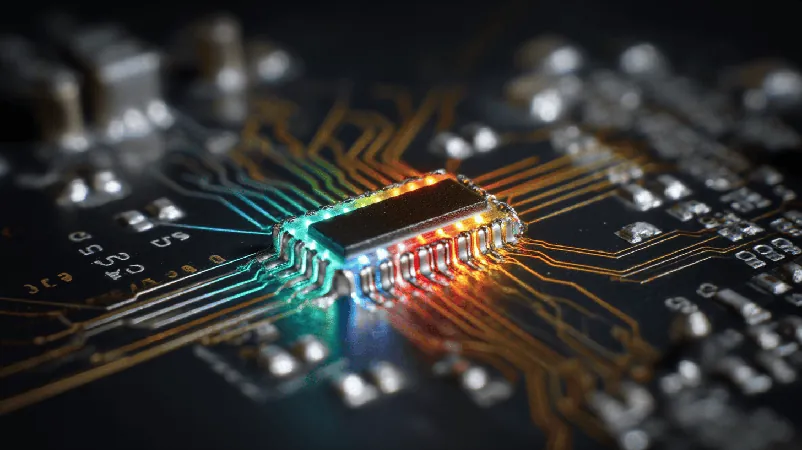
Revolutionary Chip Uses Light to Train AI—A Game Changer for Technology!
2025-05-05
Author: Wei Ling
A Quantum Leap in AI Technology!
Imagine a world where artificial intelligence operates not on electricity, but on beams of light. Engineers from the University of Pennsylvania have achieved just that with the creation of the world’s first photonic processor, capable of training AI systems in real-time using only pulses of light. This innovation could dramatically transform the future of AI training!
The Energy Drain of Traditional AI Training
As AI has evolved from a futuristic concept to an everyday necessity, training these sophisticated neural networks has become an energy-intensive ordeal. Current AI technologies primarily utilize powerful GPUs, which, while fast, demand enormous amounts of electricity and create significant carbon footprints. For instance, training advanced models like GPT-4 can cost millions of dollars.
"Nonlinear functions are essential for teaching deep neural networks," explains Liang Feng, the lead researcher. But this new chip changes everything!
How the Photonic Processor Works
The breakthrough lies in the innovative design of the Pennsylvania chip, which leverages light to perform computations utterly different from traditional methods. AI systems generally consist of nodes (like neurons) interconnected by weighted links, amplifying or dampening signals as data flows through. The real power of AI stems from nonlinear functions—where small inputs lead to significant outputs.
Engineers have long imagined harnessing photons instead of electrons for computation. They finally have! This chip trains neural networks without consuming vast amounts of energy, all while increasing processing speed.
Transforming Light into Computation
The magic happens with a special semiconductor that can change transparency based on light input. The chip employs two light beams: one that carries the data and another that shapes how the semiconductor reacts. By adjusting the pattern and intensity of the 'pump' light, the team can manipulate how the 'signal' light is processed, enabling complex nonlinear computations crucial for AI.
Unleashing New Possibilities in AI
This technology adapts its behaviors during training, making it not only efficient but also programmable. When tested on classic machine-learning tasks, the chip achieved commendable results—96.7% accuracy in classifying iris flower species and over 91% accuracy in recognizing spoken words, using far fewer connections than traditional networks.
The Path Ahead for Photonic AI Training
Although this pioneering chip is still in its infancy, the implications are enormous. The technology relies on complex optical setups, and scaling it up will require significant advancements in engineering and manufacturing. Future work will focus on integrating the chip with existing silicon photonic platforms and expanding its capabilities across various applications, including vision, speech, and robotics.
We may be witnessing the dawn of a new era in AI—where light, not wires, fuels rapid and efficient computation. This chip not only promises a faster future but also a fundamentally different approach to training AI systems!


 Brasil (PT)
Brasil (PT)
 Canada (EN)
Canada (EN)
 Chile (ES)
Chile (ES)
 Česko (CS)
Česko (CS)
 대한민국 (KO)
대한민국 (KO)
 España (ES)
España (ES)
 France (FR)
France (FR)
 Hong Kong (EN)
Hong Kong (EN)
 Italia (IT)
Italia (IT)
 日本 (JA)
日本 (JA)
 Magyarország (HU)
Magyarország (HU)
 Norge (NO)
Norge (NO)
 Polska (PL)
Polska (PL)
 Schweiz (DE)
Schweiz (DE)
 Singapore (EN)
Singapore (EN)
 Sverige (SV)
Sverige (SV)
 Suomi (FI)
Suomi (FI)
 Türkiye (TR)
Türkiye (TR)
 الإمارات العربية المتحدة (AR)
الإمارات العربية المتحدة (AR)